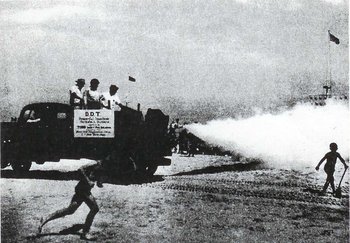Chlorinated pesticides
The types of chemicals of greatest concern in the environment are those that are: toxic; persistent (do not readily break down in the environment); and taken up by–and that affect the development of–living things. After World War II, pesticides were developed from organic chemicals (that is, carbon-based substances that also contain hydrogen) with chlorine atoms on them. These are called chlorinated hydrocarbons, or organochlorines. There are several classes of organochlorines. Organochlorine pesticides like DDT were used extensively in agriculture.
The risks involved with pesticide use were not widely recognized until 1962 when Rachel Carson, a biologist working for the U.S. Fish and Wildlife Service–and an eloquent science writer–published Silent Spring. This work, along with other studies and publications, increased public awareness of such issues as: acute and chronic pesticide impacts on humans, wildlife, and other non-target species; the persistence of pesticides in the environment (originally considered a great benefit); and the transport of pesticides outside target areas (that can cause unintended environmental damage).
Organochlorines are relatively insoluble in water, very persistent in soils, bioaccumulate in fat, and biomagnify through food chains. Most agricultural chemicals were not used directly in aquatic environments, but have entered them through run-off from land. In the United States, for example DDT, was sprayed extensively in salt marshes to control biting flies and mosquitoes.
DDT was the focus of considerable controversy following the publication of Rachel Carson's Silent Spring and the general realization that overall application of chemicals could cause environmental damage. This awareness led to public concern about the environment, increased attention to the value of environmental research, the formation of activist organizations working for environmental protection, and the growth of the environmental movement.
The Stockholm Convention (ratified in 2001) banned the use of several organochlorine pesticides, including aldrin, chlordane, DDT, dieldrin, endrin, heptachlor, mirex, and toxaphene. Though organochlorines continue to be used as agricultural pesticides and for mosquito control (e.g., for malaria) in developing countries. While most organochlorine insecticides are no longer used in the U.S., because they are persistent, they remain in soils and sediments and continually cycle through the food web.
